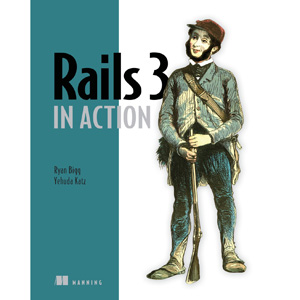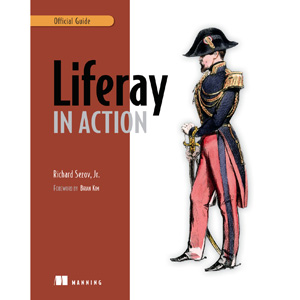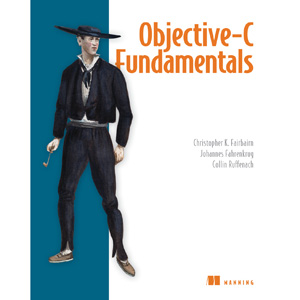4 new posts |  |
| Posted: 21 Sep 2011 02:09 PM PDT
Book DescriptionRails 3 is a full stack, open source web framework powered by Ruby and this book is an introduction to it. Whether you’re just starting or you have a few cycles under your belt, you’ll appreciate the book’s guru’s-eye-view of idiomatic Rails programming. You’ll master Rails 3.1 by developing a ticket tracking application that includes RESTful routing, authentication and authorization, state maintenance, file uploads, email, and more. You’ll also explore powerful features like designing your own APIs and building a Rails engine. You will see Test Driven Development and Behavior Driven Development in action throughout the book, just like you would in a top Rails shop. It is helpful for readers to have a background in Ruby, but no prior Rails experience is needed. What’s Inside
Table of Contents
Book Details
Related Posts
|
| Posted: 21 Sep 2011 02:05 PM PDT
Book DescriptionPortlets in Action is a comprehensive guide to building portlet-driven applications in Java. It teaches portlet development hands-on as you develop a portal that incorporates most key features of the Portlet 2.0 API. And because portals and portlets are so flexible, the accompanying source code can be easily adapted and reused. Along the way, you’ll learn how to work with key web frameworks like Spring 3.0 Portlet MVC and DWR. Written for Java developers. No prior experience with portlets required What’s Inside
Table of Contents
PART 2 DEVELOPING PORTLETS USING SPRING AND HIBERNATE
PART 3 ADVANCED PORTLET DEVELOPMENT
Book Details
Related Posts
|
| Posted: 21 Sep 2011 02:01 PM PDT
Book DescriptionLiferay in Action is the official guide to building Liferay portal applications using Java and JavaScript. If you’ve never used Liferay before, don’t worry. This book starts with the basics: setting up your development environment and creating a working portal. Then, it builds on that foundation to help you discover social features, tagging, ratings, and more. You’ll also explore the Portlet 2.0 API, and learn to create custom themes and reusable templates. Experienced developers will learn how to use new Liferay APIs to build social and collaborative sites, use the message bus and workflow, implement indexing and search, and more. This book was developed in close collaboration with Liferay engineers, so it answers the right questions, and answers them in depth. No experience with Liferay or the Portlets API is required, but basic knowledge of Java and web technology is assumed. What’s Inside
Table of Contents
PART 2 WRITING APPLICATIONS ON LIFERAY’S PLATFORM
PART 3 CUSTOMIZING LIFERAY
Book Details
Related Posts
|
| Posted: 21 Sep 2011 02:00 PM PDT
Book DescriptionObjective-C Fundamentals guides you gradually from your first line of Objective-C code through the process of building native apps for the iPhone. Starting with chapter one, you’ll dive into iPhone development by building a simple game that you can run immediately. You’ll use tools like Xcode 4 and the debugger that will help you become a more efficient programmer. By working through numerous easy-to-follow examples, you’ll learn practical techniques and patterns you can use to create solid and stable apps. And you’ll find out how to avoid the most common pitfalls. No iOS or mobile experience is required to benefit from this book but familiarity with programming in general is helpful. What’s Inside
Table of Contents
PART 2 BUILDING YOUR OWN OBJECTS
PART 3 MAKING MAXIMUM USE OF FRAMEWORK FUNCTIONALITY
Book Details
Related Posts
|
| You are subscribed to email updates from Wow! eBook - Blog To stop receiving these emails, you may unsubscribe now. | Email delivery powered by Google |
| Google Inc., 20 West Kinzie, Chicago IL USA 60610 | |





Tidak ada komentar:
Posting Komentar